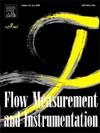An optimization method based on mechanism model constraint for gas-liquid slug flow rate prediction
IF 2.3
3区 工程技术
Q2 ENGINEERING, MECHANICAL
引用次数: 0
Abstract
Slug flow is a complex and unstable phenomenon that often occurs in petroleum extraction, chemical industry, etc. Accurate measuring of flow rates can aid in comprehending the initiation and progression mechanism of slug flow, thereby controlling or avoiding of slug flow appearance in industrial operations. Classic slug flow two-fluid models are commonly applied to predict pressure drop or hold-up, relying on known gas-liquid flow rates and empirical correlations. These models require numerous slug characteristic parameters as inputs, which are difficult to obtain with a single sensor. In this paper, in order to predict gas-liquid flow rates, the continuity and momentum equations based on the two-fluid model are firstly established. Then an optimization method based on these mechanistic model constraints is proposed to solve gas-liquid flow rates and the genetic algorithm is selected. In the optimization process, only ultrasonic sensors are utilized to obtain four slug characteristic parameters as inputs, including translational velocity of liquid slug, average height of liquid film, slug unit frequency and liquid slug length. Experiments are carried out in 50 mm diameter pipe with air and water as the media. The superficial gas velocity was in range of 1.0–3.0 m/s and superficial liquid velocity was in range of 0.2–0.4 m/s. Ultrasonic pulse echo method is applied to obtain these four parameters. 16 working conditions are tested. Finally, the mean absolute relative deviations (MARD) of the gas-liquid flow rate prediction results are 4.47 % and 2.50 %, respectively, which verifies the validity and accuracy of the new method.
求助全文
约1分钟内获得全文
求助全文
来源期刊

Flow Measurement and Instrumentation
工程技术-工程:机械
CiteScore
4.30
自引率
13.60%
发文量
123
审稿时长
6 months
期刊介绍:
Flow Measurement and Instrumentation is dedicated to disseminating the latest research results on all aspects of flow measurement, in both closed conduits and open channels. The design of flow measurement systems involves a wide variety of multidisciplinary activities including modelling the flow sensor, the fluid flow and the sensor/fluid interactions through the use of computation techniques; the development of advanced transducer systems and their associated signal processing and the laboratory and field assessment of the overall system under ideal and disturbed conditions.
FMI is the essential forum for critical information exchange, and contributions are particularly encouraged in the following areas of interest:
Modelling: the application of mathematical and computational modelling to the interaction of fluid dynamics with flowmeters, including flowmeter behaviour, improved flowmeter design and installation problems. Application of CAD/CAE techniques to flowmeter modelling are eligible.
Design and development: the detailed design of the flowmeter head and/or signal processing aspects of novel flowmeters. Emphasis is given to papers identifying new sensor configurations, multisensor flow measurement systems, non-intrusive flow metering techniques and the application of microelectronic techniques in smart or intelligent systems.
Calibration techniques: including descriptions of new or existing calibration facilities and techniques, calibration data from different flowmeter types, and calibration intercomparison data from different laboratories.
Installation effect data: dealing with the effects of non-ideal flow conditions on flowmeters. Papers combining a theoretical understanding of flowmeter behaviour with experimental work are particularly welcome.
 求助内容:
求助内容: 应助结果提醒方式:
应助结果提醒方式:


